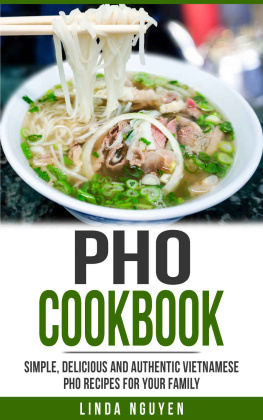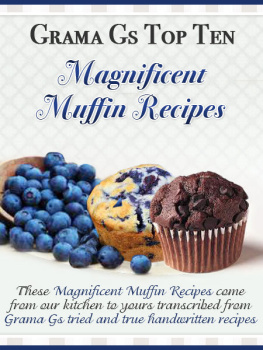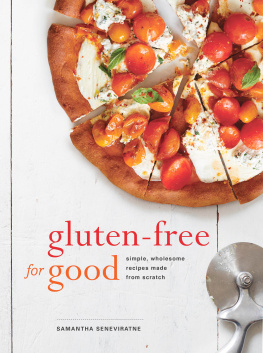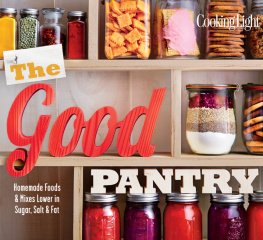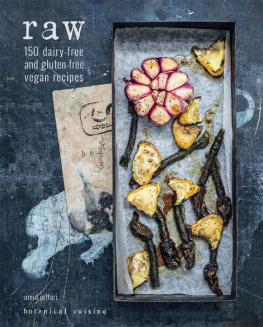D.I.Y. Delicious
Recipes and Ideas for
Simple Food from Scratch
by
Vanessa Barrington
Photographs by
Sara Remington

Text copyright 2010 by Vanessa Barrington.
Photographs copyright 2010 by Sara Remington.
All rights reserved. No part of this book may be reproduced in any form without written permission from the publisher.
Library of Congress Cataloging-in-Publication Data available.
ISBN: 978-1-4521-0034-0
Designed by Suzanne LaGasa
Prop styling by Kami Bremyer
Food styling by Nani (Romney) Steele
Premonitions of Flynn for Vanessa by Susan Fleming, 2001
Chronicle Books LLC
680 Second Street
San Francisco, CA 94107
http://www.chroniclebooks.com
Maseca is a registered trademark of Maseca or GRUMA, S.A.B. de C.V.; Microplane is a registered trademark of Grace Manufacturing, Inc.; Crock-Pot is a registered trademark of Sunbeam Products, Inc.; Gusss Pickles is a registered trademark of Crossing Delancey Pickle Enterprises Corporation; iPhone is a registered trademark of Apple Inc.; Lodge is a registered trademark of Lodge Manufacturing Company; eBay is a registered trademark of eBay Inc.; Amazon is a registered trademark of Amazon.com, Inc.; Maytag blue cheese is a registered trademark of Maytag Dairy Farms; Artisana is a registered trademark of Artisana Raw Organic Nut Butter; Exo Superpeel is a registered trademark of ExoProducts, Inc.
This book is dedicated to every eater
and cook who has ever asked the question,
Why cant I make this myself?
Contents
A few years ago, while attending a family reunion, I visited the house my mother grew up in during the 1930s. The low-slung, brown, brick house sits on a large lot on the outskirts of a small town near Salt Lake City. The house was surrounded by a farm until a portion of the property was sold to the high school next door. My mothers siblings, Aunt Amelia (Aunt Mil) and Uncle Don, still live there. They still grow a few rows of this and that, and the crabapple tree still bears fruit. The pantry off the kitchen was the thing that struck me most powerfully. The shelves were lined with pickles, preserves, jams, jellies, and canned tomatoes and other vegetables from the garden. It looked strangely foreign to me, like a museum in some other country.
My mom never canned or preserved a thing. She relied on packaged, convenience products to put dinner on the table seven days a week while working a nine-to-five job. Cooking was work. The only time she seemed to enjoy cooking was on special occasions when shed make some of our traditional Serbian family dishes: sarma (stuffed cabbage rolls) or the yeasted, barely sweet walnut-date bread called orevnitza thats only served at Christmastime, or Aunt Mils jam-filled sugar cookies. Today, Im thankful that Aunt Mil stayed in that house all these years, preserving the harvest right along with our family food traditions.
When I first saw all those jars neatly lined up, their contents barely discernible in the dim light, the hand-written labels indecipherable, I felt both happy and a little wistful. Happy they were there, but wistful because something that should have been part of me wasnt. Id missed out on a culinary tradition. That was when the memories of eating at my grandmothers house came backdim ones to be sure. I was only four when we moved away to California. But I do remember platters of homemade food full of richness, love, and skill. I remember women working in the kitchen. I remember playing outside between the rows of plants. I remember the first time I learned what a honeysuckle tasted like.
By the time of that family reunion, I was already a professional cook with a natural curiosity about how things work in the kitchen. Still, I wasnt as connected to my food as I wanted to be. After seeing my moms family home, I went back to my home inspired because I knew that those Depressionera characteristics were in my genesresourcefulness and an inability to waste food.
BEYOND THE PACKAGE
My personal journey into making more of my own basic foods started as a way to revive the lost kitchen arts that I had seen my aunt upholding. I questioned why I was purchasing everyday staples that are so easy to makethings like granola, bread, butter, tortillas, and pickles. I started dabbling a little here and there, noticing how much better most anything I made from scratch tasted than any food from a packagehowever special or gourmet it purported to be. I began looking at labels more closely, noticing the ingredients that are added to almost all foods to preserve their shelf life, color, and texture. I knew that even the highest-quality products werent necessarily made with the freshest, tastiest, seasonal produce, because theyre made year-round, not just when the ingredients are at their best. Packaged foods have to be consistent and cost effective. Seasonality isnt a consideration. I wanted to get beyond the packaging altogether and create a completely homemade kitchen.
That was about the time I realized I was drowning in plastic quart containers from my daily yogurt habit. It made me a little sick just to think about all that plasticnot just what I was buying, but what others discarded as well. I wondered if it was really necessary. I considered buying a yogurt maker but visions of abandoned appliances left on urban sidewalks stopped me: Those sad, yellowed yogurt makers, Crock-Pots, and bread machines left over after yard sales with hastily scrawled signs saying FREE taped onto them. I thought, Do I really need another appliance? Surely people made yogurt successfully before there were yogurt makers. So I did some research and figured out that all you really need is a way to keep the milk warm while it cultures. I looked at many suggestions and rigged up a method that worked for me.
Another thing happened that pushed me even farther away from packaged foods. One summer Sunday, I noticed that a family members backyard plum tree was literally dripping with gorgeous, plump, purple plums. After gorging ourselves on several, we realized that the bulk of the remainder needed to be harvested that day or they would end up falling to the ground and rotting. Yet, I could easily imagine any of us in a grocery store buying jam within the next few weeks. It seemed criminal. We got out the ladder and worked together filling countless paper grocery bags. We gave away all we could to friends, neighbors, and a local foraging group called Forage Oakland; ate more than we should; froze all that would fit in the freezer; and still there were more. The next day I made jam for the first time. The family got their plums back in jars. They were delighted. I brought some to friends. We ate it all winter on toast and stirred into yogurt. Many people told me it was the best jam theyd ever had. I thought so, too. I came to a realization: If I can make the best jam ever on the first try, in just a couple of hours, why buy it? If you truly care how your food tastes and about knowing exactly whats in it, why buy anything when you can make it yourself?
Around this time, a lot was happening outside of my kitchen. Just as the Slow Food movement was starting to penetrate beyond its early adherents, and more people were becoming aware of the pleasures of eating locally and simply, people started waking up to the problems in our industrialized, globalized food system. It was becoming clear that our food is making us sicksometimes very slowly, through unhealthful additives and the wrong kinds of calories. And sometimes more quickly, through food contamination and adulteration. Then the economy started to shake and food prices climbed suddenly. Feelings of vulnerability sparked a nationwide resurgence in self-reliance activities not seen since World War IIactivities like urban farming, suburban homesteading, keeping chickens, foraging, canning, preserving, and planting backyard gardens. It seemed that just as people were finding that they wanted to reconnect with their food, they were learning that they might just have to.


